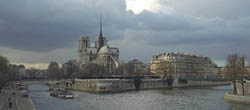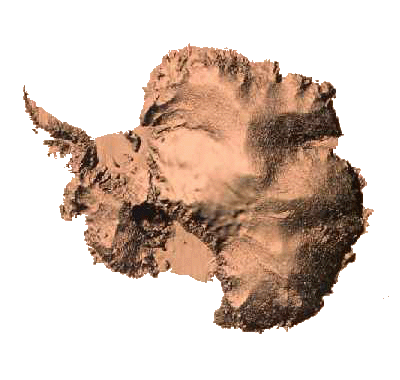Antarctica

A Complete Guide to its History, People, Cities and Culture



Photo Credits, top to bottom: Delphia, the city where visitors first arrive on the continent; Semei, on the northeast coast of Antarctica, known for its seafood, computer language industry and telekinesis experiments; Balloonists pass above the green hills surrounding Delphia, on their way back to the city; Detail of the ruins at Mimosa, where the most famous battle in Antarctican history occurred in 1403 B.C.
BUY MY BOOKS | HOME | FICTION | ESSAYS | ON-LINE DIARY | MARGINALIA | GALLERY | INTERACTIVE FEATURES | FAQ | SEARCH ENGINE | LINKS | CONTACT
www.ralphrobertmoore.com
the official website for the writings of
ralph robert moore

People
Antarcticans are a single race. Skin and hair color ranges from poetically pale to yellow, peach, red, brown and black. Eye colors are blue, green, gold, brown and black. Antarcticans are slightly taller than Americans on average, and are generally perceived by others as being very attractive physically.
One of the great mysteries of Antarcticans is their metabolism. Unlike most peoples, Antarcticans' ability to quickly metabolize food does not slow as they age. As a consequence, nearly all Antarctican men and woman stay at whatever is their ideal weight, either lean or stocky for the males, and slender or pleasingly plump for the females. No one suffers from morbid obesity in Antarctica, nor are there any anorexics or bulimics. Antarcticans' seemingly effortless ability to remain at ideal weight regardless of the amount eaten (and Antarcticans are fond of feasts) has encouraged many in the West to believe the race might hold the secret to many of the diseases associated with obesity such as heart disease and diabetes, although it is unclear at this point, with so little research done, if Antarcticans' ability to remain at ideal weight is something intrinsic to their metabolic systems, or a property of the food they eat, even as high-caloric as that food can sometimes be.
Some believe the food Antarcticans eat may also be a key to their general good health. Antarcticans rarely fall ill, and have an average life span of one hundred and forty years, nearly all of it spent physically and intellectually fit. The major diseases (cancer, diabetes, stroke) do not exist in Antarctica, despite a diet often high in fat, and wide use of tobacco and alcohol (80% of Antarcticans smoke, and nearly all of them drink), nor are there any sexually transmitted diseases (STDs) or certain other infectious diseases such as influenza. Illness in Antarctica is generally limited to the common cold, which the average Antarctican contracts three times during a lifetime; ubu, which temporarily weakens; and buzzereet, which causes delusions. None, though, are life-threatening. Most Antarcticans die in old age, from withung, a sleeping disease, or die younger from accidental causes.
What is probably the greatest influence on Antarcticans, and has been most responsible for allowing them to achieve all they have, is their strong sense of honor. It is not that it is impossible for an Antarctican to lie, or steal, or cheat, or be rude. It is that even though all those activities are, of course, possible, no Antarctican would ever debase himself or herself with such pursuits. As a consequence, there is virtually no crime in all of Antarctica; people are generally cheerful all the time, since there is no negative aspect to social encounters; and costs are only a fraction of what they are in the outside world.
It is said that when an outsider first meets an Antarctican, she notices first his non-threatening nature, then his intelligence, then his sense of humor, and then his kindness. Many people who have met Antarcticans say they remind them of a favorite aunt or uncle from childhood.
Slightly less than fifty percent of Antarcticans have children. Those that do, generally have three. Twins and triplets are extremely rare-- much more so than in other nations.
Antarctican children do not begin school until age ten, and usually complete their studies at age twenty-five. The school system in Antarctica is quite different from those of other countries, in that there are no structured grade levels (kindergarten, grade school, high school, college). Instead, each child progresses at his or her own rate through the body of knowledge accumulated by Antarcticans, and as a consequence may be with older children while learning chemistry, for example, and with younger children while learning history, according to each child's natural talents and interests. Most classes do not use textbooks, and are held outside. School attendance is voluntary. The school year usually consists of three months at the beginning of the year, and three months in the middle. The normal school day is six hours.
At around age sixteen, most Antarctican children participate in the first of at least three "walk-ins", an Antarctican custom. In this first walk-in, fourteen children unknown to each other enter the woods together and spend anywhere from a week to a month in the wilderness (it is up to them, by majority vote, to decide the length of their stay). Why there must be fourteen of them is unknown. Presumably, the exercise is to teach them both self-sufficiency and cooperation with others, which may also be why all the children must be strangers to each other. No adults are present during the childrens' time in the forest, and the children, although usually outfitted with sleeping bags and some basic tools, are not allowed to take any food into the woods with them.
The second walk-in normally occurs at age nineteen. This time, a child goes into the woods by himself or herself, and it is literally a "walk in", in that the child enters the woods only with the clothes they are wearing, and traditionally does so on the spur of the moment, without notifying anyone of their intention to begin the walk-in. This walk-in usually lasts a half year, during which time the child is cut off from all communication with the outside world. It is only during this second walk-in that an Antarctican, according to custom, may enter Val, a dense forest towards the center of Antarctica where the trees grow so close to each other one must squeeze between them in many places, and where the animals are alleged to talk to humans (there may be a problem of understanding here: Antarcticans speak of the animals in Val as communicating with humans through actual vocalizations, but it is difficult to not assume that Antarcticans are speaking metaphorically).
The third walk-in, and for many Antarcticans the final, occurs when two Antarcticans choose each other as mates, which normally occurs in an Antarctican's late twenties. Both then enter the forest together, again with only the clothes they are wearing, and remain in the woods from anywhere from three months to a year. Most Antarcticans then marry, upon emerging from the forest.
Given that Antarcticans are advanced in so many ways, one would expect their divorce rate to be extremely low, or perhaps non-existent, but in truth approximately one-third of all Antarctican first marriages end in divorce. Since there are no laws in Antarctica there is no formal procedure which must be followed to begin or end a marriage, although most couples traditionally post a notice of the start or end of a marriage in a local newspaper.
Once Antarcticans marry, they tend to spend more and more time with each other, and less in society. It is usually during this period that a couple will build their home, create furnishings for it, and begin work on their garden (Antarcticans, who love gardening, tend to create elaborate, park-like gardens on their properties, often several acres in size, full of waterfalls, hidden paths, sudden vistas and quiet ponds). When not with each other, most couples are in adjacent rooms in their home, each pursuing their special interests, with frequent breaks to talk. Since there are no such things as university degrees in Antarctica (a student simply leaves school once he or she feels confident they have learned the body of knowledge common to Antarcticans), all Antarcticans are, in the best sense, great amateurs, much like the naturalists of the nineteenth century. The two great lifelong Antarctican pursuits are art and science; it is not unusual for an Antarctican to near the end of his life having created, in his spare time (of which he has much), a significant body of writings and/or artwork or music, and to have also contributed at least several important papers in those sciences he found himself most inclined to study, such as entomology or astronomy. It is an experience for an outsider to read a botanical paper extraordinary in its clarity and comprehensiveness, then view beautifully-realized sculptures, while listening to an intricate musical work, and realize they were all created by the same mind, and that there are millions of other minds just as creative on this same continent.
print this article